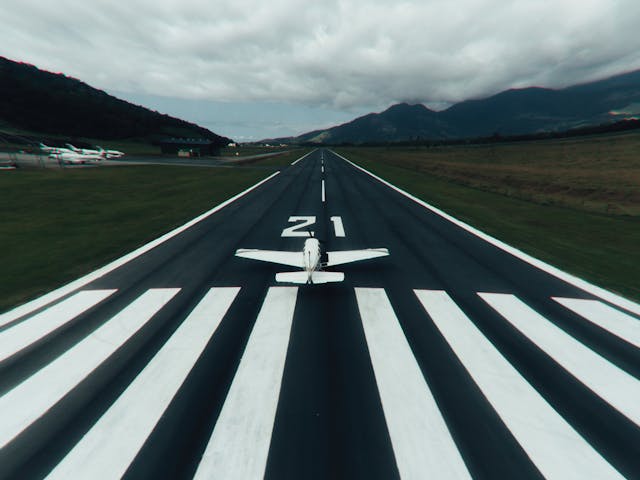When you think about air travel, our minds typically gravitate towards the parts of the journey one can see and experience: boarding the aircraft, the thrilling sensation of takeoff, and the anticipation of reaching our destination. However, an intricate and meticulously coordinated series of steps takes place behind the scenes to ensure that each flight departs safely and efficiently. These processes, largely hidden from passengers, are essential components of the aviation industry’s unwavering commitment to safety and precision.
Pre-Flight Planning
The journey begins long before an aircraft arrives at the gate. A series of detailed pre-flight planning activities are undertaken to ensure everything is in place for a successful flight. This starts with flight planning, where dispatchers and pilots collaborate to chart the best route, considering current weather conditions, air traffic, and fuel requirements. Advanced computer systems play a crucial role in creating flight plans that maximize both efficiency and safety.
Flight Planning and Weather Analysis: Flight planning is a sophisticated process that involves much more than simply plotting a course from one airport to another. Dispatchers analyze many factors including weather patterns, turbulence forecasts, and potential hazards along the route. They also identify alternate airports that can be used in case of emergencies. Pilots review this information and may adjust the flight plan based on real-time data received before and during the flight.
Fuel Calculation: Accurate fuel calculation is critical for the flight’s safety and efficiency. Pilots and dispatchers consider various factors such as the aircraft’s weight, weather conditions, and the flight route to determine the exact amount of fuel needed.
Ground Operations
Once the aircraft lands, ground operations commence to prepare it for its next flight. Ground crew members, utilizing specialized aviation GSE (Ground Support Equipment), are responsible for a multitude of tasks that ensure the aircraft is ready for departure:
Aircraft Inspection and Maintenance: Before each flight, maintenance teams perform thorough inspections of the aircraft to check for any signs of wear and tear, mechanical issues, or potential hazards. Routine maintenance tasks such as refueling, checking tire pressure, and inspecting the engines are also carried out to ensure everything is in optimal condition.
Loading and Weight Distribution: Proper loading and weight distribution are vital for the safety of the flight. Ground crews meticulously load baggage and cargo, ensuring it is evenly distributed to maintain the aircraft’s balance. They also verify that the total weight does not exceed the aircraft’s maximum takeoff weight, adhering to strict safety regulations.
Cockpit Preparations
While passengers are boarding, the cockpit crew is busy with their own set of preparations. Pilots conduct a series of critical checks to ensure the aircraft is ready for departure:
Pre-Flight Checklists: Pilots follow comprehensive pre-flight checklists that cover every aspect of the aircraft’s systems. These checklists include checks of navigation systems, communication equipment, flight controls, and engine parameters. Redundancies are built into these procedures to ensure that nothing is overlooked, guaranteeing a thorough inspection.
Communication and Coordination: Pilots maintain constant communication with air traffic control (ATC) to receive clearance for departure. They also coordinate with ground crew and flight attendants to ensure that everything is on schedule. Clear and precise communication is essential to prevent misunderstandings and ensure a smooth and safe departure.
Pushback and Taxiing
With all pre-flight procedures complete, the aircraft is ready for pushback and taxiing. This phase involves moving the aircraft from the gate to the runway in preparation for takeoff:
Pushback: Ground crews use specialized vehicles known as tugs to push the aircraft away from the gate. This maneuver requires precise coordination between the cockpit crew and ground personnel to ensure it is executed safely and efficiently. Once the aircraft is correctly positioned, the tug disconnects, and the aircraft is ready to taxi.
Taxiing: After pushback, the pilots take control and taxi the aircraft to the designated runway. Taxiing involves navigating the aircraft through the airport’s intricate network of taxiways. Pilots follow instructions from ground control to avoid other aircraft and obstacles, ensuring a safe journey to the runway.
The Takeoff
With all preparations complete, the aircraft is ready for the final and most exhilarating phase: takeoff. This process involves several critical steps:
Engine Throttle-Up: Pilots gradually increase the engine throttle, accelerating the aircraft down the runway. They closely monitor engine performance and ensure that the aircraft reaches the necessary takeoff speed.
Rotation and Lift-Off: At the appropriate speed, known as V1, the pilot initiates rotation by pulling back on the control column. This action raises the aircraft’s nose, causing it to lift off the runway. Pilots carefully manage the aircraft’s climb to ensure a smooth ascent into the sky.
Initial Climb and Departure: Once airborne, the aircraft enters the initial climb phase. Pilots follow departure procedures, maintaining constant communication with ATC to navigate through controlled airspace. They adjust the aircraft’s speed and altitude according to the flight plan to ensure a safe and efficient departure.
Conclusion
From runway to takeoff, the steps involved in preparing an aircraft for flight are a testament to the aviation industry’s dedication to safety, precision, and efficiency. Each phase, from pre-flight planning to the final climb, is meticulously coordinated to ensure a seamless journey for passengers. The next time you board a plane, take a moment to appreciate the extensive and often invisible efforts that make air travel possible.
Keep an eye for more news & updates on MyStoriesList.Com!
